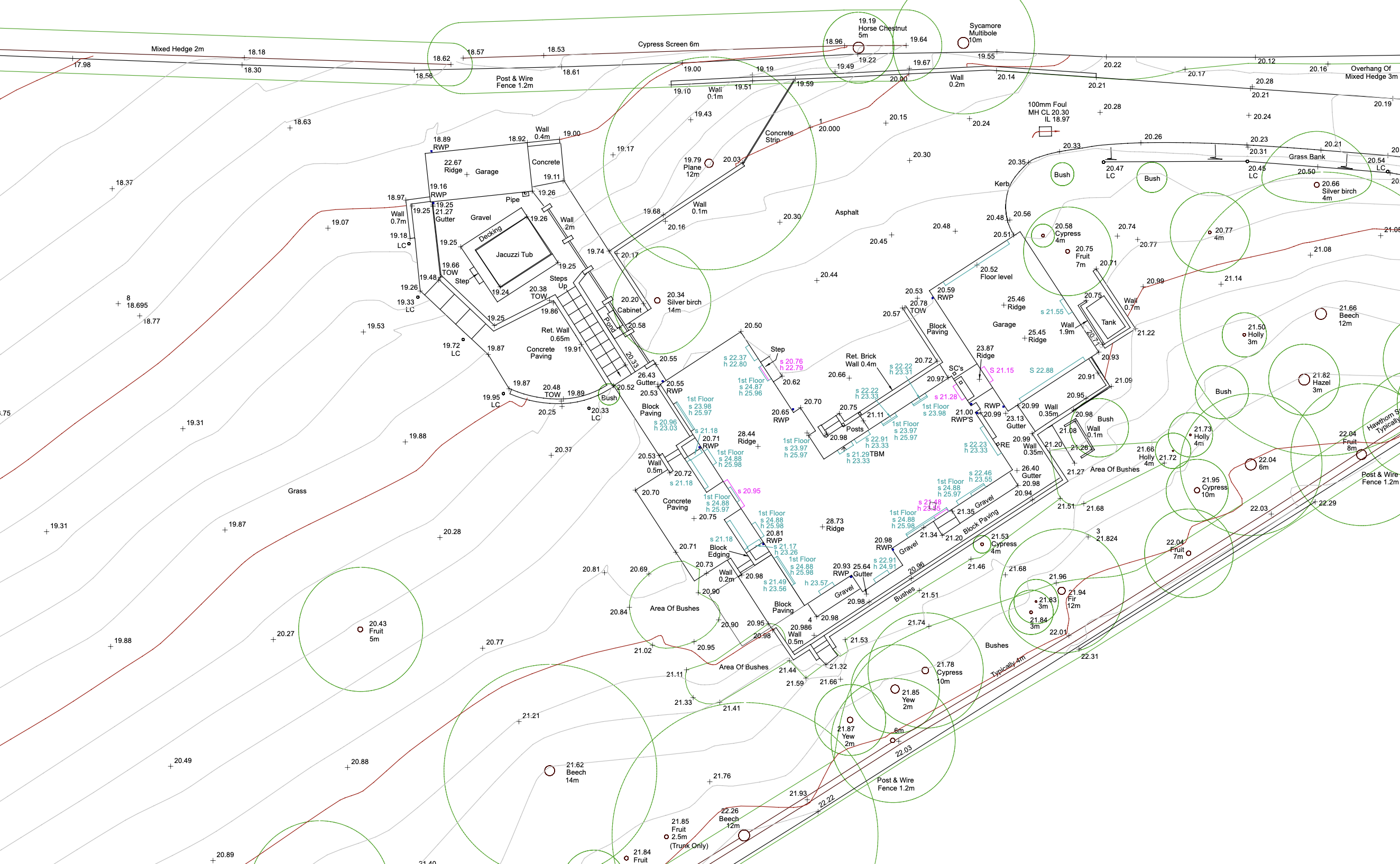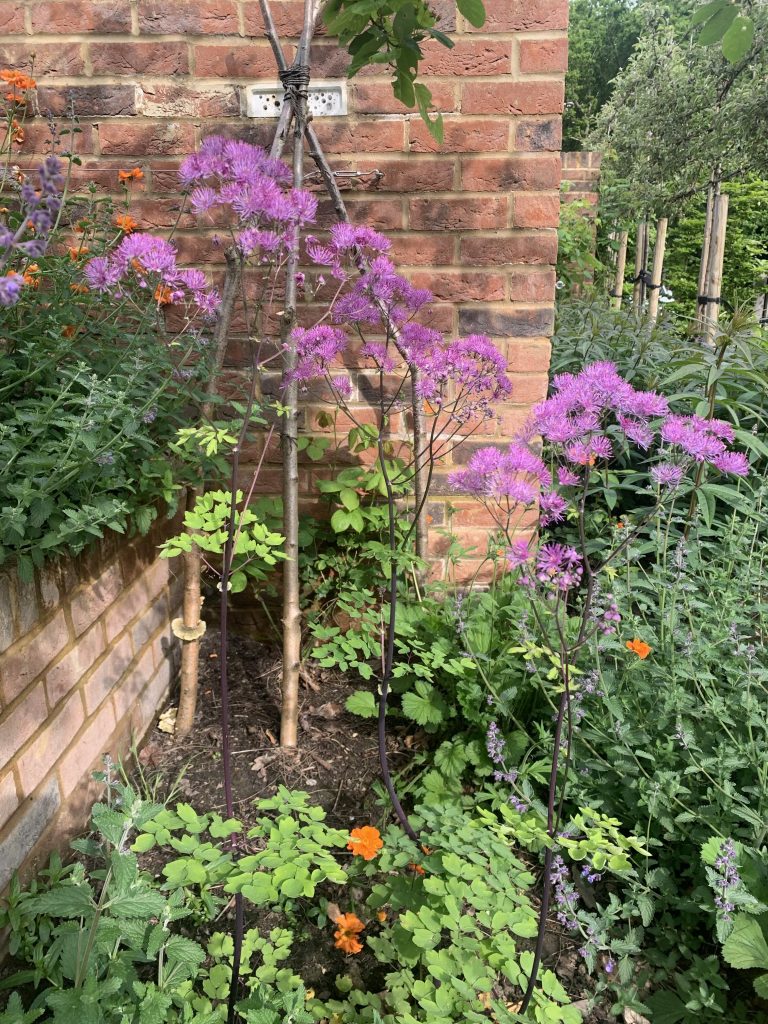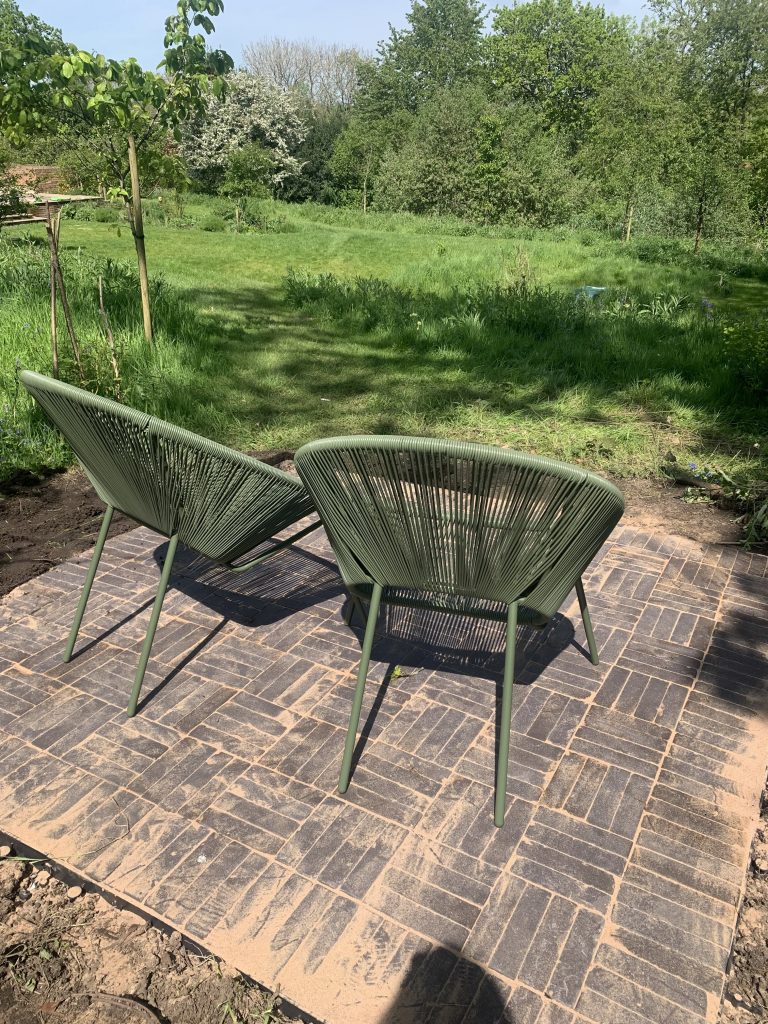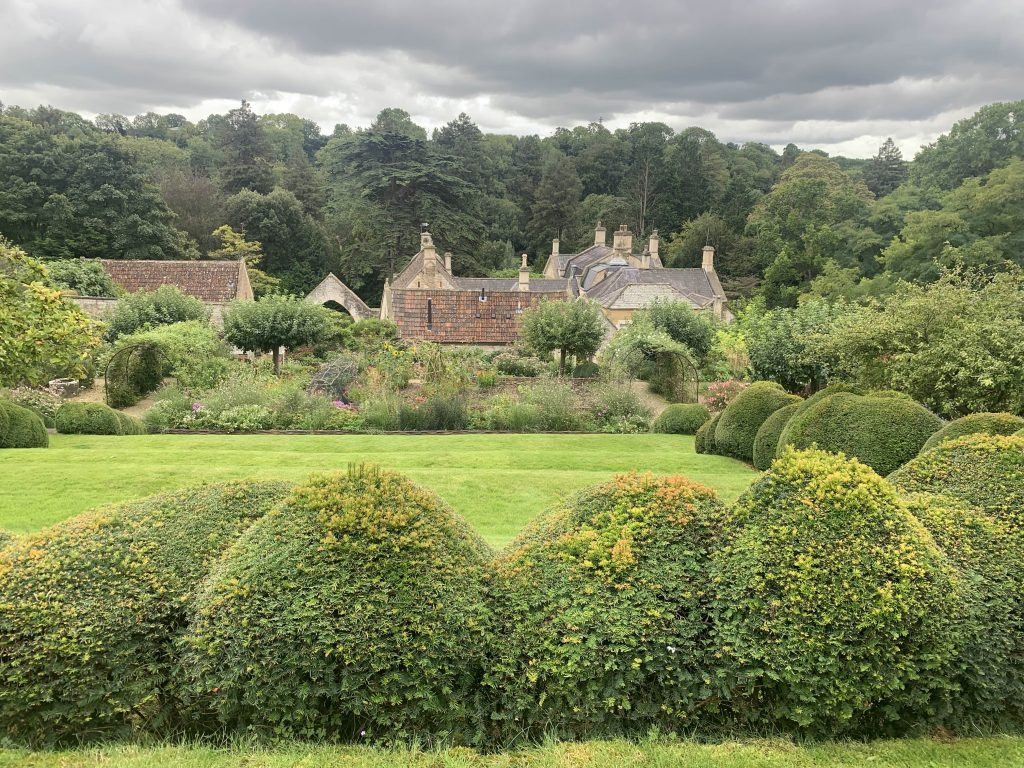Gardening on a slope

As Shan Liu Garden Design is based in the hilly area of the Chilterns, sloping or uneven sites are a common feature of projects. More than that, given Shan Liu Garden Design is based on a hilltop of c. 30m elevation above the adjacent land, slopes are a daily feature of life! Gardening here for more than 10 years has resulted in a wealth of firsthand experience and perspectives to support projects with slopes.
Hard Landscaping Considerations:
1: Access:
Depending on the gradient, access can be challenging or restricted in some sloping gardens. No one wants to be dragging materials up, or down, a slippery sloping site. It can also be difficult to safely use a big mechanical digger or other heavy machinery if the ground slopes too much. Careful consideration and planning around this topic must extend right through the project from the first sketches to the fine details. Amongst a wide range of others, choice of materials, storage areas and temporary access are all key to efficient cost management and successful completion.
2: Drainage:
Rainwater will naturally form micro channels and rivulets on exposed groud with any gradient. This will become apparent once major earthworks and hard landscaping are undertaken. Some areas in Buckinghamshire are famous for clay soil which will make the problem worse if the drainage solutions are not considered upfront – for example land drains or gravel features.
3: Earthworks and Topographical Surveys:
A common major objective when designing on a sloping site is to strategically create flat areas for people to use. Along with that, a second objective may be including specific plantable areas which will help to conceal the contours. To help achieve this, it is important to have a topographical survey to work with and rely upon – the visual perception of levels can be deceiving when in a large landscape. Careful planning based on the survey also helps to manage costs and (re)use available resources efficiently. I generally follow the principle of move-and-fill avoiding having to buy in earth which can be expensive, in addition to adding to the carbon footprint of a project. With a thoughtful design, one can maximise the amount the flat space needed while keeping the garden ecological and the construction economical and efficient.
4: Steps:
Steps are always important in linking elements of a garden, and from a design perspective are very different from how one would consider steps in a house. On a sloping site especially, steps can be quite a unique design opportunity. Generally, I prefer garden steps with a shallower riser (max 150mm) and deeper tread (min 350mm). Shallow tread and deeper rise will hasten people to get out of it rather than calmly meandering around the garden. Where space is limited, a generous garden step can even turn into informal seating or just another place to pause and admire the view.
5: Fences and Boundaries:
If your garden is sunken and much lower than the adjacent land, it is inevitable your fences not only act as a boundary but also need to retain adjacent land, which means a more solid solution is often required for longevity. Discussion with neighbours is key at an early stage to avoid further issues and give due consideration to matters such as the Party Wall Act.
6: Materials:
Durable, long-lasting materials are always key as any gravity walls will take considerable weight and endure the harsh outdoor conditions. When constructed, walls need concrete footing which will of course carry some cost. Brickwalls or stones are usually better suited for this purpose than a rendered finish. Whilst timber sleepers are often used in DIY projects but we all know they will have a finite lifespan, in addition to sometimes have preservatives that may not be compatible with wildlife gardening aims. With careful design, metal edging can achieve great effect by creating a series of gentle terraces and steps. Hardwood decking can be another useful tool in conceal the slope. I am particularly fond of using it around larger bodies of water.
Softscaping Considerations:
1: Planting:
Planting that successfully translates a concept to reality in any garden requires considerable horticultural experience. This is particularly so for a sloping garden – longer term experience brings more comfort with planting varied terrain and less need to terrace unnecessarily, in turn reducing cost and allowing more project focus on planting and other design elements themselves.
2: Forget about the usual planting design rules:
On a sloping ground, plants can be seen from any angle and plants’ height become relative. The usual rules of planting the smallest at the front, and tallest at the back doesn’t work on a sloping ground. Sometimes you have to be brave and place a tall plant at the front on the side. If you do plant smaller plants at the front, with taller ones at the back, the border can look as if the planting is tumbling down the hill. Contours add a dimension to the planting, this can be harnessed to great effect but is a skill in itself.
3: Slope orientation:
Is your border south-facing or north-facing? Orientation becomes a much more important factor to consider when planting on a slope. In fact, a north-facing slope can be easier to plant than a sunny slope because it is less inclined to dry out and most shade-loving plants are less likely to lean out strenuously towards the sun, making the entire planting appear unsettled.
As a garden designer and an experienced gardener, I will consider all the above factors when developing designs in order to support construction of the most sympathetic, economical and ecological garden. Tailored to individual needs, I listen to your requirements and consider your lifestyle, the architectural qualities of your house, and the uniqueness of each site.
Learn more about the design process with Shan Liu Garden Design Ltd on my process page.
Shan Liu Design
Garden designer, Plant lover, Thalassophile, Mum of two



One Response